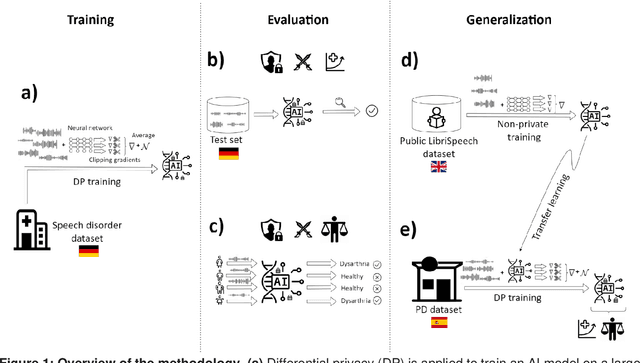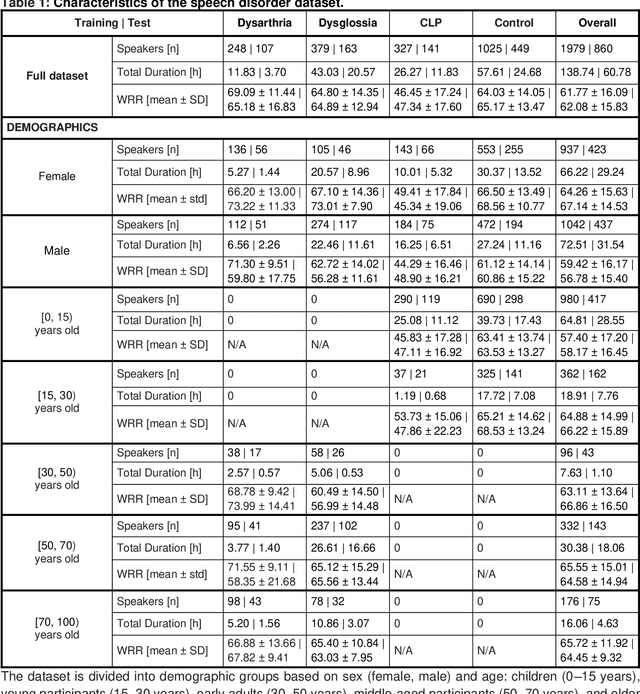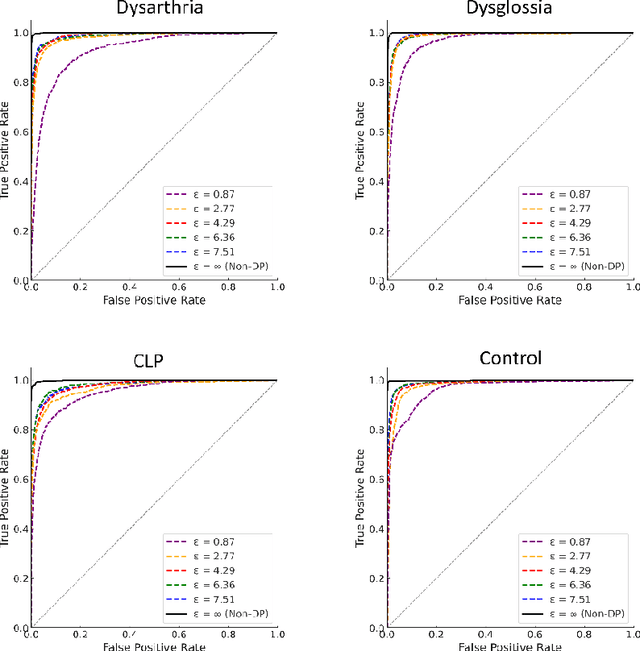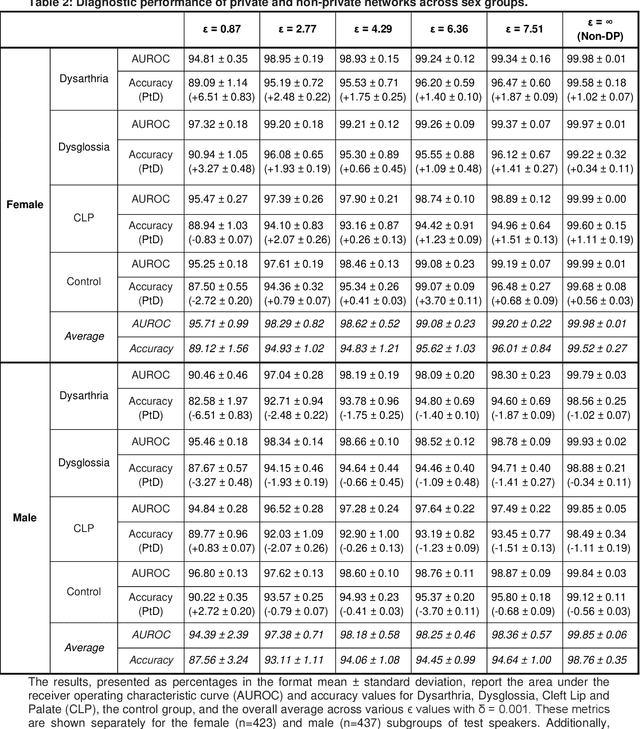Paula Andrea Perez-Toro
Differential privacy for protecting patient data in speech disorder detection using deep learning
Sep 27, 2024



Abstract:Speech pathology has impacts on communication abilities and quality of life. While deep learning-based models have shown potential in diagnosing these disorders, the use of sensitive data raises critical privacy concerns. Although differential privacy (DP) has been explored in the medical imaging domain, its application in pathological speech analysis remains largely unexplored despite the equally critical privacy concerns. This study is the first to investigate DP's impact on pathological speech data, focusing on the trade-offs between privacy, diagnostic accuracy, and fairness. Using a large, real-world dataset of 200 hours of recordings from 2,839 German-speaking participants, we observed a maximum accuracy reduction of 3.85% when training with DP with a privacy budget, denoted by {\epsilon}, of 7.51. To generalize our findings, we validated our approach on a smaller dataset of Spanish-speaking Parkinson's disease patients, demonstrating that careful pretraining on large-scale task-specific datasets can maintain or even improve model accuracy under DP constraints. We also conducted a comprehensive fairness analysis, revealing that reasonable privacy levels (2<{\epsilon}<10) do not introduce significant gender bias, though age-related disparities may require further attention. Our results suggest that DP can effectively balance privacy and utility in speech disorder detection, but also highlight the unique challenges in the speech domain, particularly regarding the privacy-fairness trade-off. This provides a foundation for future work to refine DP methodologies and address fairness across diverse patient groups in real-world deployments.
The Impact of Speech Anonymization on Pathology and Its Limits
Apr 11, 2024Abstract:Integration of speech into healthcare has intensified privacy concerns due to its potential as a non-invasive biomarker containing individual biometric information. In response, speaker anonymization aims to conceal personally identifiable information while retaining crucial linguistic content. However, the application of anonymization techniques to pathological speech, a critical area where privacy is especially vital, has not been extensively examined. This study investigates anonymization's impact on pathological speech across over 2,700 speakers from multiple German institutions, focusing on privacy, pathological utility, and demographic fairness. We explore both training-based and signal processing-based anonymization methods, and document substantial privacy improvements across disorders-evidenced by equal error rate increases up to 1933%, with minimal overall impact on utility. Specific disorders such as Dysarthria, Dysphonia, and Cleft Lip and Palate experienced minimal utility changes, while Dysglossia showed slight improvements. Our findings underscore that the impact of anonymization varies substantially across different disorders. This necessitates disorder-specific anonymization strategies to optimally balance privacy with diagnostic utility. Additionally, our fairness analysis revealed consistent anonymization effects across most of the demographics. This study demonstrates the effectiveness of anonymization in pathological speech for enhancing privacy, while also highlighting the importance of customized approaches to account for inversion attacks.
A Survey of Music Generation in the Context of Interaction
Feb 23, 2024



Abstract:In recent years, machine learning, and in particular generative adversarial neural networks (GANs) and attention-based neural networks (transformers), have been successfully used to compose and generate music, both melodies and polyphonic pieces. Current research focuses foremost on style replication (eg. generating a Bach-style chorale) or style transfer (eg. classical to jazz) based on large amounts of recorded or transcribed music, which in turn also allows for fairly straight-forward "performance" evaluation. However, most of these models are not suitable for human-machine co-creation through live interaction, neither is clear, how such models and resulting creations would be evaluated. This article presents a thorough review of music representation, feature analysis, heuristic algorithms, statistical and parametric modelling, and human and automatic evaluation measures, along with a discussion of which approaches and models seem most suitable for live interaction.
 Add to Chrome
Add to Chrome Add to Firefox
Add to Firefox Add to Edge
Add to Edge